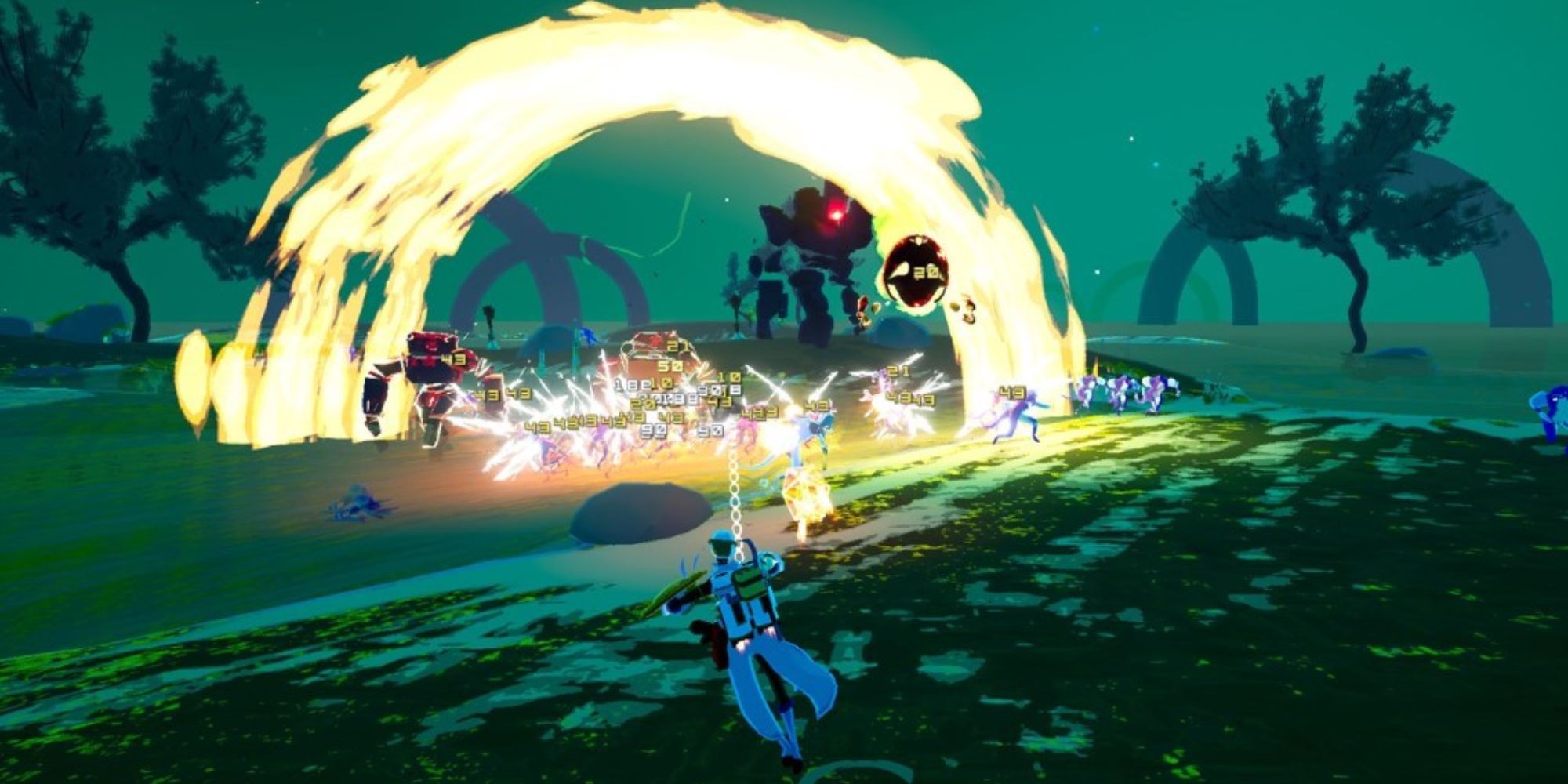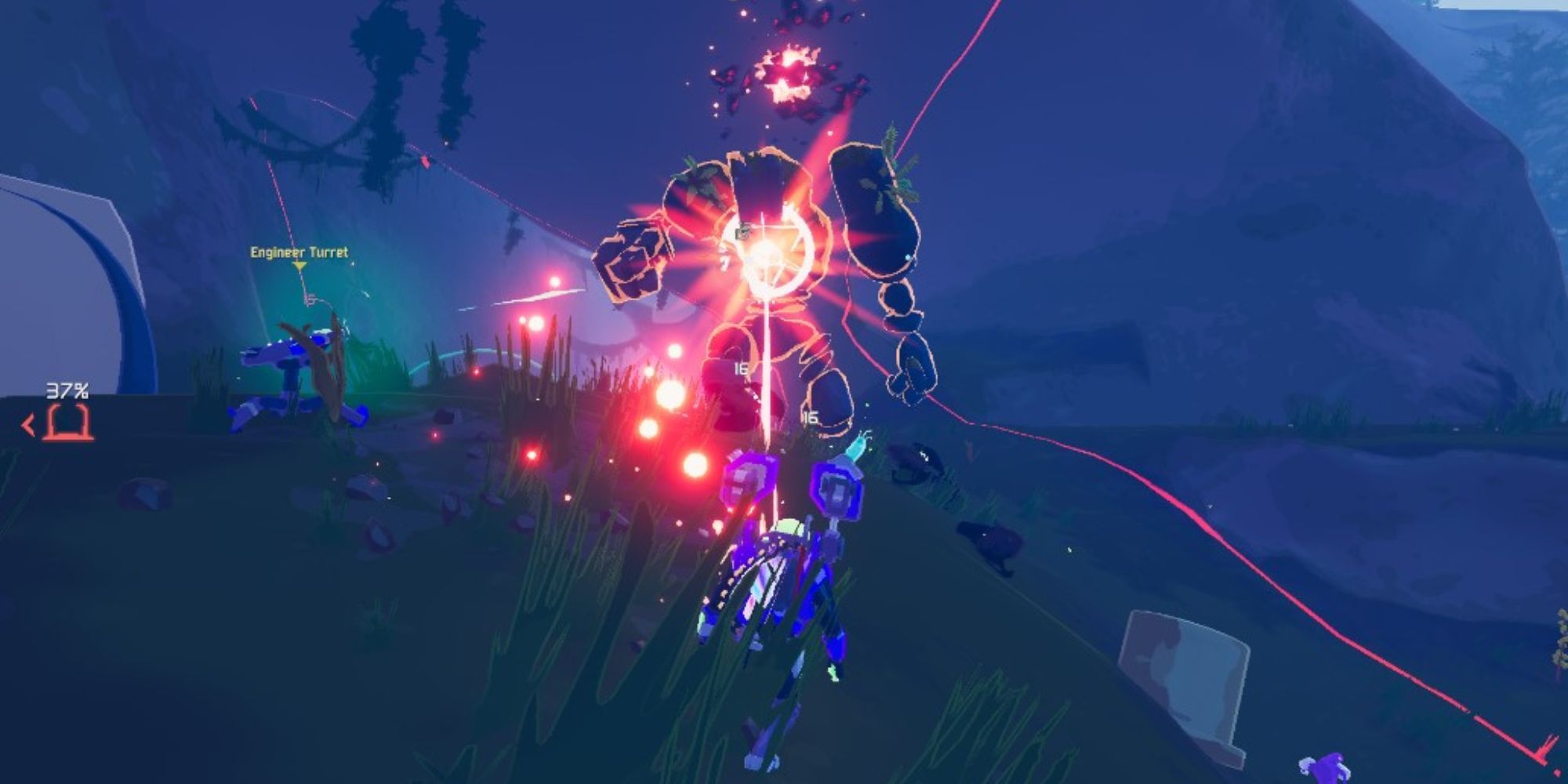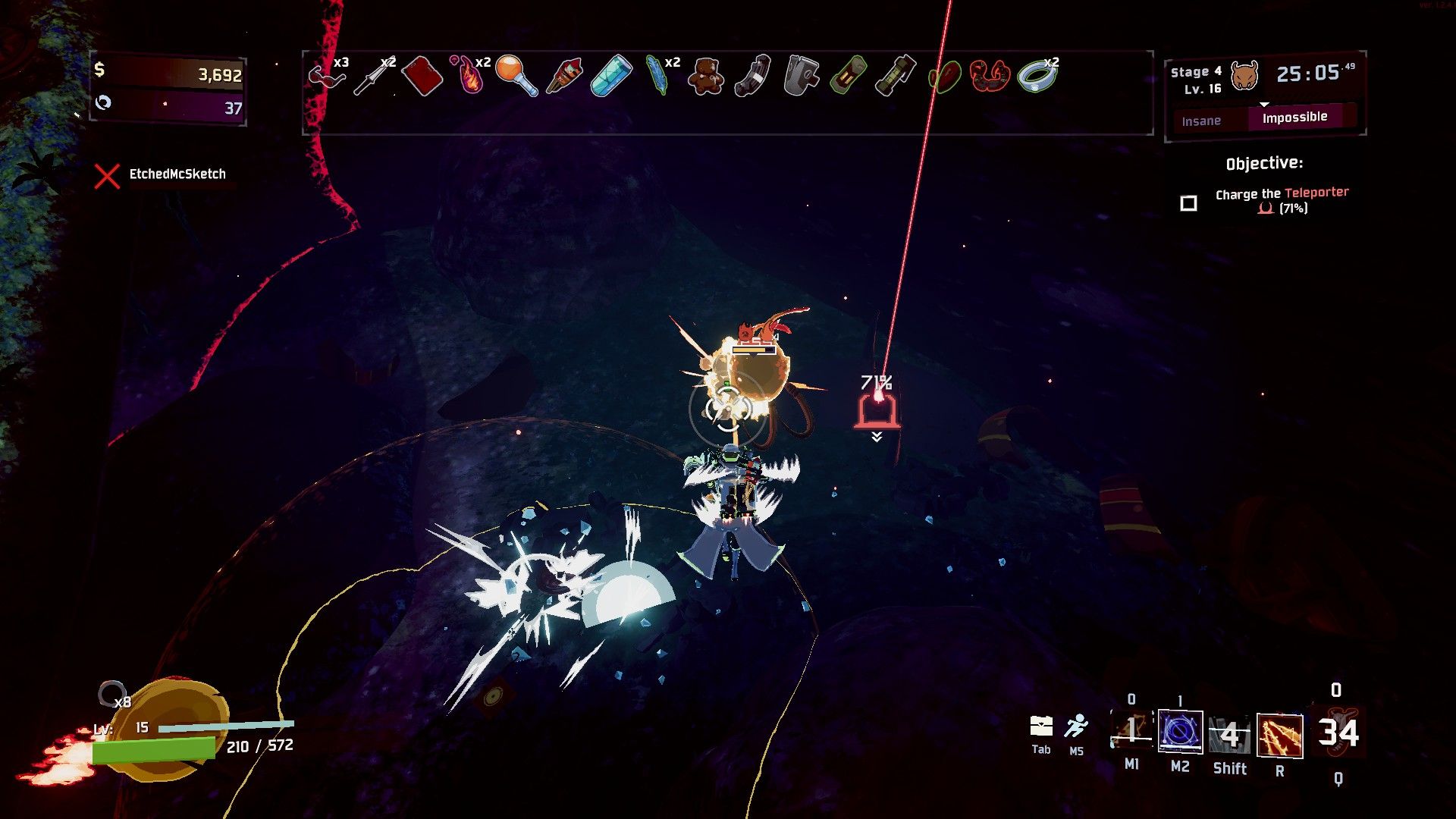No genre of gaming strikes fear into my heart quite like the Roguelike. Binding of Isaac, Spelunky, Dead Cells — my curiosity for these has always been drowned out by my aversion to that roguelike staple of permadeath. I've never liked losing massive amounts of progress upon failure in a game — the idea that one small mistake could reset swathes of progress is one that I find truly daunting, especially if that mistake can occur in a game's last hurdle. Ergh, I shudder just thinking about it...
So you can imagine how apprehensive I was when my partner recommended Risk of Rain 2 to me. I was drawn in by its look–a cel-shaded design that managed to form its own sci-fi identity removed from any 'cartoony' direction– but I still had a ton of nerves surrounding the game. Thankfully, those were quelled as soon as I started playing. Risk of Rain 2 is an incredibly fun ride that strikes a balance between producing high stakes and not making death feel like a massive sapping of progress.
Risk of Rain 2 is fantastically easy to grasp. The loop sees you progressing through six stages — the first five of which have the same objective: spawn in, activate the teleporter, beat the boss and move onto the next world. The game makes these objectives clear as soon as you land into a run, ensuring your path to progress is as simple as possible; the worlds you're dropped into are decently small, and the teleporter is easy to see by the swathes of red lights surrounding it like fireflies.
Controls and character design emphasize this accessibility; each of the different characters uses the same button inputs for their abilities — all of which are explained to the player beforehand and can be easily tried out in the wide-open spaces of the game. Characters unlocked later on have more complexity, but those unlocked in the early stages (such as the Commando or the Bandit) can be quickly understood. The game even offers tactical advice upon selecting a character to help you play optimally.
What really sells the game's intuitiveness, however, is its scaling difficulty. In the corner of your screen is a ticking timer and a difficulty that slowly increases alongside it. This meter begins at Easy before progressing 8 stages to the final ‘HAHAHAHA’ difficulty. With each stage, enemies gain more health and a higher damage output whilst also spawning in greater numbers. This design decision does wonders for making everything around it easier to understand. The player must decide whether they want to kit themselves out with the barrage of items found across each level or make a beeline for the teleporter. Whilst moving between levels will shift the difficulty meter somewhat, overall the player has a great degree of choice over the difficulty at hand.
Beyond that, Risk of Rain 2 is, quite simply, an excellent 3rd-person shooter. The standout example for me is the Bandit, particularly with their 'Lights Out' revolver attack (a high damage, single-shot attack that provides decent range compared to the rest of their comparatively close-up tools). Getting a kill with this weapon instantly refreshes it rather than having it undergo a cooldown — allowing you to go wild killing weaker enemies by chaining attacks together. Add this to the Bandit's passive, which nets them double damage when shooting enemies in the back (as well as an ability to turn invisible temporarily) and the Bandit becomes perhaps the most potent character in the game.
Similar synergy is possible across the cast, such as how the Commando's secondary can be chained into shots of their primary or the Artificer's passive gliding, which lets you rain hell from above after jumping off high peaks. Mastering the characters' innate tools whilst combining them with the game's variety of items makes for endless possible loadouts.
Risk of Rain 2 isn't a perfect game, but the balances it strikes are pretty close; death is punishing, but the game's scaling difficulty, fun synergy, and intuitive design make it a roguelike I can really get into.
It also helped me realize that permadeath maybe isn’t all that bad, making me a little less wary of roguelikes as a whole. I'm far more willing to take the chance of playing something truly punishing thanks to this simple but outrageously fun rendition of the genre.



